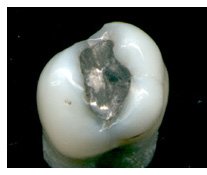For years, the FDA has marched arm in arm with the American Dental Association and unflinchingly maintained the joint position that mercury fillings are perfectly safe, despite ever increasing evidence to the contrary. But on June 3rd, they finally broke ranks. However, before you give a big round of applause to the FDA, understand that their statement was not voluntary. It resulted from the settlement of a lawsuit brought by the Mercury Policy Project, Mom’s Against Mercury, Consumers for Dental Choice, et al. And although the statement itself was weak and highly qualified, it certainly represents a breaking of the ranks, and it absolutely signals the beginning of the end for amalgam fillings — even if the ADA can’t see it yet.
The Lawsuit and the FDA
 On June 3rd, the FDA posted an announcement on its website warning that mercury-based amalgam fillings “may” pose a safety risk for pregnant women and young children. The FDA posted this precaution on its Website as the result of a settlement of the lawsuit I mentioned above. Also, as I mentioned earlier, the warning is not strong; it’s highly qualified; and it limits itself to two groups, pregnant women and children, both of which are already urged to limit their mercury intake from seafood because of concerns that too much mercury can harm developing brains. Entertainingly, the FDA also recommends that “women and young children, in particular, should include fish or shellfish in their diets due to their many nutritional benefits.” Whoever said FDA policy needs to be consistent?
On June 3rd, the FDA posted an announcement on its website warning that mercury-based amalgam fillings “may” pose a safety risk for pregnant women and young children. The FDA posted this precaution on its Website as the result of a settlement of the lawsuit I mentioned above. Also, as I mentioned earlier, the warning is not strong; it’s highly qualified; and it limits itself to two groups, pregnant women and children, both of which are already urged to limit their mercury intake from seafood because of concerns that too much mercury can harm developing brains. Entertainingly, the FDA also recommends that “women and young children, in particular, should include fish or shellfish in their diets due to their many nutritional benefits.” Whoever said FDA policy needs to be consistent?
The announcement then goes on to say that the FDA “will examine evidence concerning whether the release of mercury vapor [released in the act of chewing food] can cause health problems, including neurological disorders in children and fetuses.” In their announcement the FDA also mentioned that in 2002, they had published a “proposed” rule to classify dental amalgam as a class II device with special controls. They then went on to say that on April 28, 2008, they had reopened the comment period for that proposed rule — six years later, mind you. Additional controls under consideration include warnings to alert consumers of the mercury in amalgams before having cavities filled and/or restricting mercury-containing amalgam fillings in small children and certain other patients. The FDA is accepting public comments until July 28 with a final ruling expected a year from now, by July 28, 2009. Again, this is not voluntary. The FDA is taking these actions because they were imposed on them as part of the settlement of the Mom’s Against Mercury lawsuit — not out of a suddenly enlightened vision. “It’s an open question what we will do,” FDA Deputy Commissioner Randall Lutter told The Associated Press; however, “what this says is there’s a clear intent on our part on labeling for sensitive subpopulations.” Certainly a mixed message!
On the other hand, Michael Bender of the Mercury Policy Project called the settlement “a watershed moment.” And Charles Brown, an attorney for Consumers for Dental Choice said, “This court settlement signals the death knell for mercury fillings.”
The American Dental Association disagree
Not surprisingly, the ADA disagrees. In summary, the ADA’s position is that the FDA settlement changes nothing. It merely sets a definite deadline (July 28, 2009) for the FDA to complete the reclassification process for amalgam fillings that it started in 2002. As far as the ADA is concerned the FDA has in no way changed its approach to, or position on, amalgam fillings. As they point out, the FDA is not calling for restrictions on the use of amalgam in any particular group. They are merely restating their concerns and have set a timetable for evaluating those concerns.
Also, not surprisingly, the ADA then dredged up a number of studies that support their position that despite the fact that mercury has long been linked to brain and kidney damage at certain levels, children with amalgam fillings do not experience adverse effects related to neurobehavioral, IQ, and kidney function compared to those with composite fillings. The ADA believes these studies support the existing scientific understanding that the minute amount of mercury released by amalgam does not adversely affect children’s health.
Mercury fillings
So what is the truth about mercury fillings? Are they safe, or not?
As I detailed in Lessons from the Miracle Doctors, the American Dental Association has resolutely maintained for years that “when mercury is combined with the metals used in dental amalgam, its toxic properties are made harmless.” If this were true, it would be miraculously fortuitous. Amalgam, which consists of mercury, silver, tin, copper, and a trace amount of zinc, has been used by dentists for hundreds of years — as far back, actually, as the 7th century in China. In the United States, mercury-based fillings made their appearance in the early 1800s.
From the beginning, there were a number of dentists who were concerned by the presence of mercury, since by that time it was fairly well known that mercury was poisonous. In fact, these concerns were so strong that by the mid-1940s several dental societies, including the American Society of Dental Surgeons, had joined together to stop the use of amalgam fillings. But amalgam was just too easy to work with, and whatever ill effects people experienced were too far down the road to matter. So, in 1859, the American Dental Association (ADA) was founded primarily to promote the use of mercury amalgam as a safe and desirable tooth filling material. (Not surprising, then, that the ADA has continued to support amalgam fillings no matter the evidence.) There were no tests done at the time. Amalgam was promoted because it was easy to work with. The reason the mercury was used was because it serves to “dissolve” the other metals and make a homogenous whole.
 It would be miraculous indeed if you could arbitrarily use one of the most toxic substances in existence with no ill effect. In fact, as a toxic metal, mercury ranks just behind plutonium! So how did the ADA defend its use of such a highly toxic substance in your mouth? Well, the early position was that the mercury reacts with the other metals to form a “biologically inactive substance” so that none of it ever makes its way into your body. This was an interesting theory that, of course, turned out not to be true. Numerous studies conducted in the 1970s and 1980s proved conclusively that the mercury from fillings (primarily from mercury vapor created when we chew) makes its way into the body, ending up in your lungs, heart, stomach, kidneys, endocrine glands, gastrointestinal tract, jaw tissue, and our brains. In effect, the denser the tissue, the greater the concentration of mercury.
It would be miraculous indeed if you could arbitrarily use one of the most toxic substances in existence with no ill effect. In fact, as a toxic metal, mercury ranks just behind plutonium! So how did the ADA defend its use of such a highly toxic substance in your mouth? Well, the early position was that the mercury reacts with the other metals to form a “biologically inactive substance” so that none of it ever makes its way into your body. This was an interesting theory that, of course, turned out not to be true. Numerous studies conducted in the 1970s and 1980s proved conclusively that the mercury from fillings (primarily from mercury vapor created when we chew) makes its way into the body, ending up in your lungs, heart, stomach, kidneys, endocrine glands, gastrointestinal tract, jaw tissue, and our brains. In effect, the denser the tissue, the greater the concentration of mercury.
There have been over 12,000 papers published to date elucidating the dangers of amalgam fillings, but the most compelling of those studies detailed the use of radioactively tagged amalgam fillings in a controlled experiment. In less than thirty days, substantial levels of the tagged mercury was found throughout the body and brain, especially in the liver and kidneys. Studies have shown that within a month of receiving amalgam fillings, kidney function is reduced by well over 50 percent.
Once it became irrefutable that mercury from the fillings was ending up in our bodies, it then became mandatory for the ADA to find a new theory/defense. Again, not based on clinical studies but rather on convenience, it became the position of the ADA that, yes, perhaps some mercury does make its way into the body, but at levels that are so low it has no effect on our health. Without batting an eye, the FDA also adopted the new position with no noticeable debate or research. And once again, it would be miraculous indeed if that were true. Unfortunately, it is not. Like so many other toxic substances, the real problem with mercury is that it is a cumulative poison and the body holds onto a significant percentage of the mercury that enters it. In fact, mercury does not easily “metabolize” and pass out of the body. It remains for years and years locked to body tissue. If you want to get rid of it, you have to chelate it out.
So mercury is one of the most toxic metals known — even more toxic than lead, second to plutonium. And while there is no “conclusive” evidence that the mercury from fillings causes any particular health problems, there are a number of studies that imply such a relationship. There is strong evidence that mercury lowers T-cell (white blood cells) counts. A number of studies have shown removing amalgam fillings can cause T-cell counts to rise anywhere from 50 to 300 percent. This, alone, implicates amalgam fillings in cancer, autoimmune diseases, allergies, Candida overgrowth, and multiple sclerosis (mercury levels in MS patients are, on average, 7.5 times higher than normal). In fact, there have been several studies that have shown that white blood cell abnormalities, such as found in leukemia patients, tend to normalize when amalgam fillings are removed.
It has also been shown that mercury interferes with the ability of the blood to carry oxygen — actually cutting its oxygen-carrying capabilities by half. This would account for many instances of chronic fatigue syndrome. Mercury also has an affinity for our brains and, as already mentioned, is implicated in brain tumors and dementia. The famous “mad hatters” of England were actually hat makers who worked with mercury and eventually went insane. Finally, mercury has an affinity for fetal tissue — reaching higher levels in the fetus than in the mother herself — which accounts for mercury’s implication in birth defects.
What about other sources of mercury entering the body? Well, seafood is, of course, a source, and some other foods we eat are too. But the amount of mercury entering our bodies from amalgam fillings represents anywhere from 50 to 90 percent of the total amount! Each amalgam filling in your mouth pumps, on average, some 3,000,000,000,000,000 mercury atoms into your body every day.
So why in the world does the ADA continue to support the use of amalgam fillings? One simple answer is: if you’re in for an inch, you’re in for a mile (or as the English like to say, “In for a penny, in for a pound”). What would the legal ramifications be if the ADA suddenly announced that they, and all the dentists connected with them, had been wrong for well over 100 years and had been slowly poisoning all Americans, Canadians (the Canadian Dental Association touts the same line), or whatever?
So why does a weenified FDA announcement mark the beginning of the end for amalgam fillings?
 Until this point in time, when it came to amalgam fillings, the FDA and the ADA marched in lock-step. As already mentioned, their position was that:
Until this point in time, when it came to amalgam fillings, the FDA and the ADA marched in lock-step. As already mentioned, their position was that:
- Mercury was locked in the filling and couldn’t escape
- And then later, that although some escaped, it wasn’t enough to harm you.
In order for those positions to be tenable, they had to be maintained fanatically. The FDA’s new statement, whether they mean it to or not, represents a tectonic shift in the landscape. It totally negates their previous positions. It doesn’t matter that the new statement may be qualified, or that it is restricted to infants and pregnant women. It doesn’t matter, because what it does do is open the door — even if just a crack. What it says is that, yes, to some degree the mercury in fillings presents a threat. We now need to figure out exactly what that threat is, but after a hundred years of denial, we finally acknowledge that there is a threat.
To look at it another way, it’s a bit like the old joke:
Would you sleep with me for a million dollars?
For a million dollars, yes I would?
Okay, I’ll give you a dollar. Let’s go to bed.
I thought you were going to give me a million dollars?
That was just to determine what you were. Now that we both know what that is, we’re just negotiating the price.
And so it is with the latest FDA announcement. They’ve opened the door. If amalgam fillings are dangerous for infants, then what about toddlers? If they’re dangerous for pregnant women, then what about people with compromised immune systems? Or what about the elderly? Once the door opens, even if it’s just a crack, anything is possible. And besides, as everyone knows, a class action lawyer can squeeze his ethics through a crack so small you can’t even get an intelligent thought through it. But given a real opening and a legitimate case, the sky’s the limit.
Bottom line: the FDA’s announcement marks the beginning of the end for amalgam fillings — despite what the ADA may say. It may take a year. It may take ten, but the writing is on the wall. And besides, it’s not like there aren’t alternatives. For just $50 more a filling, you can get a composite resin filling that actually binds with the tooth, makes it stronger, and even looks like a natural part of your mouth.
In the meantime, if you have mercury fillings, you probably want to be doing regular (twice a year) heavy metal detoxes to clean the ever accumulating mercury out of your body.












Hi i have about 14 fillings
Hi i have about 14 fillings in my mouth they were all done in the 1970s .My health has been poor and a lot of pain since 1988 in my joints and mussles and no medicine work please help me.
As Jon says, you may want to
As Jon says, you may want to get them removed or do periodic heavy metal detoxes. You can read more about this in his chapter in his book called, “Your Mouth Is Killing You.”
I have had amalgam fillings
I have had amalgam fillings since I was a small child; even some in my baby teeth. As an adult I have 11 fillings, most of which are getting old. I have chronic fatigue now and a continual struggle with fungus-cased disease. Until recently, I didn’t know of the link between mercury and fungal disease (thanks to IAOMT.org & this site, I do now). Doug Kaufmann’s “The Fungus Link” series of books contain much information. Much of our problems (those of us with years of exposure to amalgam/mercury) are also fungal. At least in the first book of the series, there is a diet protocol to starve off fungus in the body; called “The Intial Phase Diet” (formerly “the Phase One Diet”). Yes, there is a second phase in the diet also. The problems your experiencing are listed in the Fungus Link series; therefore they maybe fungal related. You may benefit by following the regimen as I have.